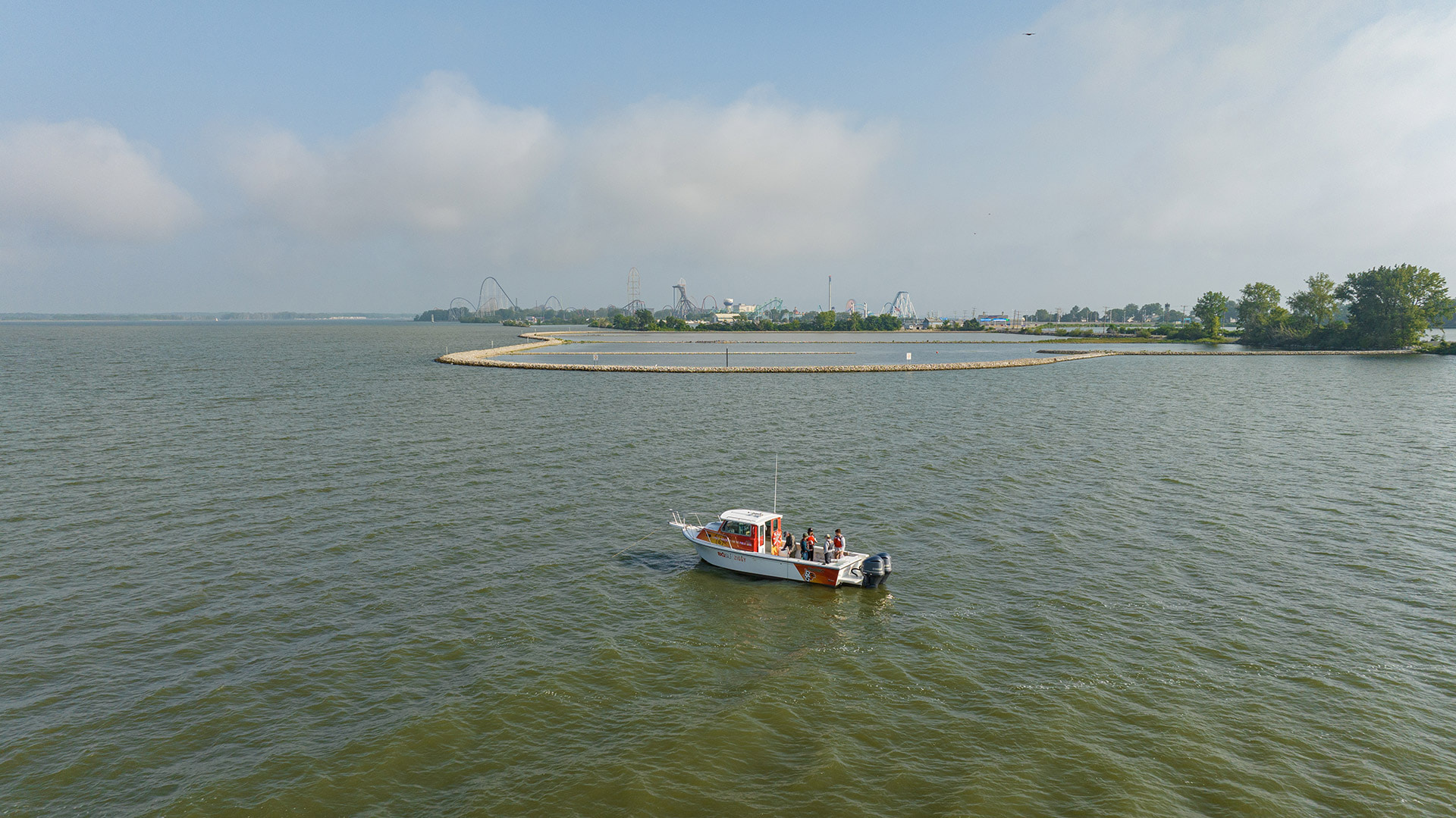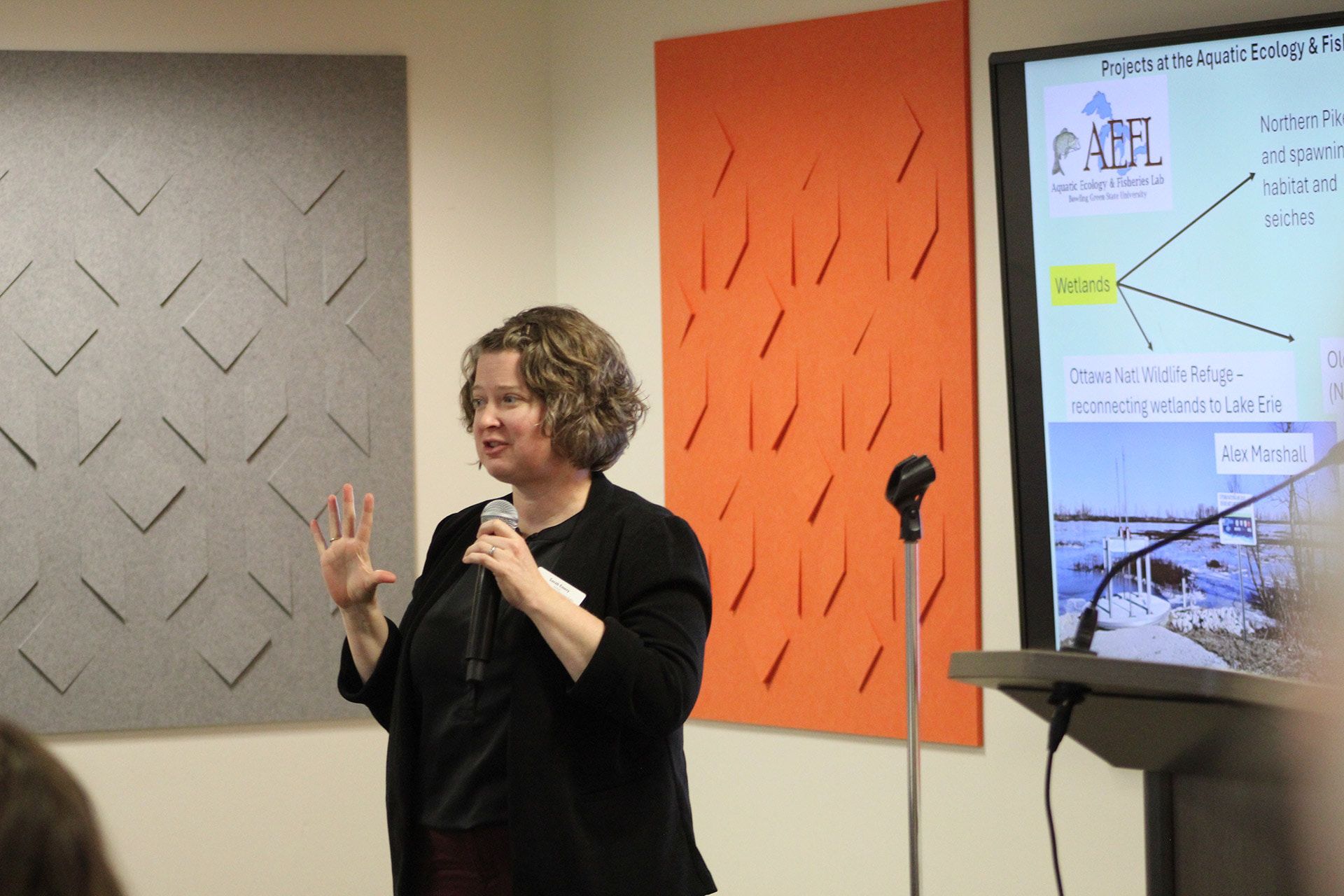
Collaboration takes center stage for new director of BGSU Center for Great Lakes and Watershed Studies
Estimated Reading Time:
Incoming CGLWS director Dr. Sarah Emery has center uniquely positioned to address water quality in Lake Erie watershed
Traveling north on I-75, Dr. Sarah Emery always took note of a road sign that alerted commuters that they were entering the Lake Erie watershed.
The sign serves as a reminder that the Great Lakes are both important and unique, and their continued care is a prerogative for everybody who lives near them.
Now a professor of biological sciences at Bowling Green State University, Emery took over as the director of the Center for Great Lakes and Watershed Studies earlier this year, an opportunity that served as a perfect match, both professionally and personally.
“The Great Lakes hold 95% of surface fresh water in North America, so it’s a very unique system we should be proud of,” she said. “I grew up visiting the Great Lakes on vacations to Michigan and Canada, so I love them and I’m hoping the research we do and connections we make in the center can spread that sense of love and appreciation for them."
The size of Lake Erie, both in terms of volume and importance, is something that will require many stakeholders to work together, Emery said.
That is exactly the mission of the CGLWS, which aims to advance the understanding of the Great Lakes by encouraging and promoting multi-disciplinary and collaborative research.
Researchers from BGSU have led and collaborated on projects that include examining the role of wetlands in mitigating harmful algal blooms and studying similar water quality issues in Lake Victoria.
“Lake Erie is so big that it requires collaboration to solve problems,” Emery said. “It takes those of us who have the direct connection to Lake Erie to work together to understand what’s going on in this huge, important system.”
Emery, who comes to BGSU after nearly two decades at the University of Louisville, has spent most of her career studying the Great Lakes.

As a plant ecologist, Emery has focused much of her professional research on sand dune ecosystems in Great Lakes watersheds.
Seventeen BGSU faculty members already are part of the CGLWS, and connecting researchers from different disciplines – both within sciences and beyond – is a key focus of Emery’s efforts as its director.
“By focusing on the watershed, I think the center is great at connecting the researchers we already have here, whether that’s studying land use, communities or the water itself,” Emery said. “It was enticing for me to come here because there are so many strengths in aquatic ecology, but we also have a lot of strengths in agricultural research, urban ecology and other areas where we can approach the problem from multiple angles.
“For me, that’s a really exciting team to be part of.”
Emery said she hopes to further engage the campus community in the CGLWS, which she said is not just for physical science faculty and students.
The Great Lakes’ importance to everyday life in the upper Midwest are unparalleled, and promoting their understanding could apply to any academic discipline, Emery said.
“I was a double major in college in biology and art, so multi-disciplinary efforts have always been exciting to me,” she said. “I think BGSU really values those multi-disciplinary interactions, and there are a lot of researchers here whose strengths are aquatic ecology as it relates to the Great Lakes. The idea with the center is that collaboration can be a little bit more intentional across units in the future.”
In her short time as director, Emery said she has been impressed by the research ongoing at BGSU, both in terms of scope and connection between disciplines.
With so many BGSU experts already working in tandem on key issues for the Great Lakes, Emery said she’s looking forward to the future of the CGLWS.
“I’ve been here two months and I’ve already been involved in so many big, collaborative projects,” Emery said. “It feels really exciting and energetic to be here at BGSU.”
Related Stories
Media Contact | Michael Bratton | mbratto@bgsu.edu | 419-372-6349
Updated: 03/12/2025 04:54PM




